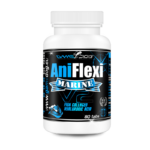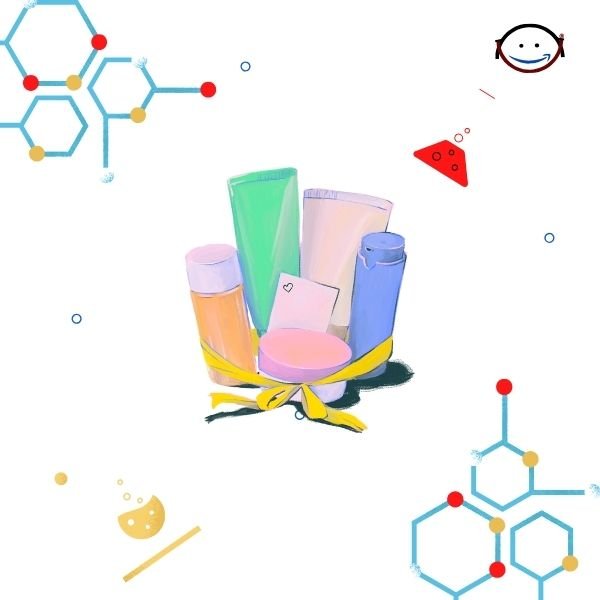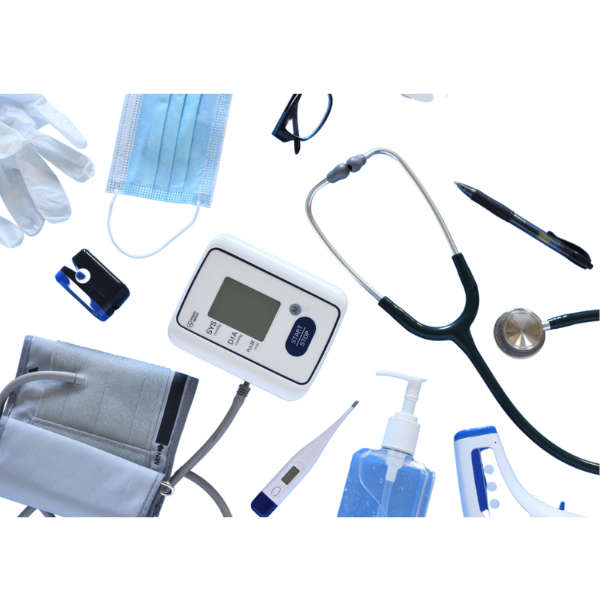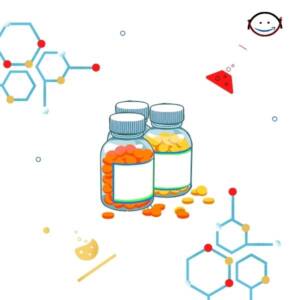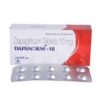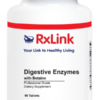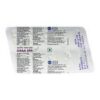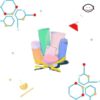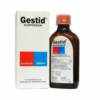-
Supradyn? Refill Bayer 35 Coated Tablets ₦28,823.00 QTY: 2
-
DAPANORM 10MG STRIP OF 10 TABLETS ₦3,609.50 QTY: 1
-
La Roche-Posay Effaclar Purifying Mask 100ml ₦33,723.26 QTY: 1
-
RxLink Digestive Enzymes With Betaine ₦1,781.00 QTY: 1
-
OcuSoft Eye Lid Scrub Original Foaming Cleanser - 50ml ₦49,900.00 QTY: 1
-
ORAA SPA CAP 10?S ₦6,777.50 QTY: 1
-
ACECLO SPAS TAB 10`S ₦2,911.00 QTY: 1
-
ROSU HDL 10MG STRIP OF 10 TABLETS ₦3,815.75 QTY: 1
-
GLIMINYLE 2MG TAB 10`S ₦1,306.00 QTY: 1
-
BIOVIT 200ML SYP ₦3,093.75 QTY: 1
-
Gestid Suspension 200ml Fast Relief From Heartburn ₦1,500.00 QTY: 1
-
Calosoft Plus Lotion (50 ML) (PACK OF 2) ₦2,990.00 QTY: 1
Customer matched zone "Lagos Delivery Options"
Sort by:
73729–73744 of 166035 Results
-
-
-
-
Glyzia Met SpecificationRequires Prescription (YES/NO)YesGenericsSitagliptin,?MetforminUsed ForDiabetesHow it worksBy increasing and prolonging active incretin levels, Sitagliptin increases insulin release and decreases glucagon levels in the circulation in a glucose-dependent manner. It is a biguanide with antihyperglycemic effects, lowering both basal and postprandial plasma glucose. It does not stimulate insulin secretion and therefore does not produce hypoglycemia.Glyzia Met Usage And SafetyDosageSitagliptin,?MetforminSide EffectsCommon: nausea.Uncommon: somnolence, diarrhea, upper abdominal pain and blood glucose decreased.Drug InteractionsDigoxin , Furosemide , Nifedipine , Cationic drugs (e.g., amiloride, digoxin, morphine, procainamide, quinidine, quinine ranitidine, triamterene, trimethoprim, or vancomycin) , thiazides and other diuretics, corticosteroids, phenothiazines, thyroid products, estrogens, oral contraceptives, phenytoin, nicotinic acid, sympathomimetics, calcium channel blocking drugs, and isoniazid.IndicationIt is indicated as: - Initial therapy in patients with type 2 diabetes mellitus to improve glycemic control when diet and exercise do not provide adequate glycemic control. As an adjunct to diet and exercise to improve glycemic control in patients with type 2 diabetes mellitus inadequately controlled on Metformin HCl or Sitagliptin alone or in patients already being treated with the combination of Sitagliptin and Metformin HCl.When not to UseThe combination of Sitagliptin and Metformin HCl is contraindicated in:- Patients with type 1 diabetes. -Patients with known hypersensitivity to Sitagliptin, Metformin HCl or any other component of the product. - Acute or chronic metabolic acidosis , including ketoacidosis, with or without coma.Glyzia Met PrecautionsPrecautionSitagliptin+Metformin HCl are known to be substantially excreted by the kidney.Metformin HCl-related lactic acidosis increases with the degree of insufficiency of renal function, therefore, serum creatinine concentrations should be determined regularly.Glyzia Met WarningsWarning 1Since impaired hepatic function has been associated with some cases of lactic acidosis, Sitagliptin+Metformin HCl should generally be avoided in patients with clinical or laboratory evidence of hepatic disease.Warning 2Patient receiving Sitagliptin+Metformin HCl in combination with a sulphonylurea or with insulin may be at risk for hypoglycemia. Therefore, a reduction in the dose of the sulphonylurea or insulin may be necessary.Warning 3After initiation of Sitagliptin, patients should be observed carefully for signs and symptoms of pancreatitis. If pancreatitis is suspected, Sitagliptin should promptly be discontinued and appropriate management should be initiated.Glyzia Met Additional InformationPregnancy categoryAlways consult your physician before using any medicine.Storage (YES/NO)Store this medicine at room temperature, away from direct light and heat.Sku: 1716669444-582
Glyzia Met Tablets 50/500Mg (1 Box = 2 Strips) (1 Strip = 7 Tablets)
₦46,074.00 -
Glyzia Tablets SpecificationRequires Prescription (YES/NO)YesGenericsSitagliptinUsed ForDiabetesHow it worksSitagliptin is a DPP-4 inhibitor, which is believed to exert its actions in patients with type 2 diabetes by slowing the inactivation of incretin hormones, including glucagon-like peptide-1 (GLP-1) and glucose-dependent insulinotropic polypeptide (GIP). The incretins are part of an endogenous system involved in the physiologic regulation of glucose homeostasis. When blood glucose concentrations are normal or elevated, GLP-1 and GIP increase insulin synthesis and release from pancreatic beta cells by intracellular signaling pathways involving cyclicAMP. GLP1 also lowers glucagon secretion from pancreatic alpha cells, leading to reduced hepatic glucose production. By increasing and prolonging active incretin levels, sitagliptin increases insulin release and decreases glucagon levels in the circulation in a glucose-dependent manner.Glyzia Tablets Usage And SafetyDosageSitagliptinSide EffectsUpper respiratory-tract infections, headache and nasopharyngitis.Drug InteractionsDigoxin : Sitagliptin has a small effect on plasma digoxin concentrations. No dosage adjustment of digoxin is recommended. However, patients at risk of digoxin toxicity should be monitored for this when sitagliptin and digoxin are administered concomitantly.IndicationSitagliptin is indicated in patients with type 2 diabetes mellitus as an adjunct to diet and exercise to improve glycemic control as: - Monotherapy- Dual Therapy : In combination with metformin HCl or with a sulphonylurea or with a PPAR? agonist (i.e., thiazolidinediones) when the treatment with the single agent alone with diet and exercise does not provide adequate glycemic control.- Triple Therapy : In combination with metformin HCl and a sulphonylurea or with metformin HCl and a PPAR? (i.e., thiazolidinediones) when dual therapy with these agents, with diet and exercise, does not provide adequate glycemic control. - Combination with Insulin.When not to UseSitagliptin is contraindicated in: - Patients with known hypersensitivity to sitagliptin or any of the components of the product. - Patients with type 1 diabetes or for the treatment of diabetic ketoacidosis. - Children below 18 years of age.Glyzia Tablets PrecautionsPrecautionAfter initiation of sitagliptin, patients should be observed carefully for signs and symptoms of pancreatitis. If pancreatitis is suspected, sitagliptin should promptly be discontinued and appropriate management should be initiated.Glyzia Tablets WarningsWarning 1When sitagliptin is used in combination with a sulphonylurea or with insulin, medications known to cause hypoglycemia the incidence of hypoglycemia increases when used in combination with a sulphonylurea or with insulin. Therefore, a lower dose of sulphonylurea or insulin may be required to reduce the risk of hypoglycemia.Warning 2An association between dipeptidyl peptidase-4 (DPP-4) inhibitor treatment and heart failure has been observed in trials for two other members of the DPP-4 inhibitor class. Consider the risks and benefits of Sitagliptin prior to initiating treatment in patients at risk for heart failure, such as those with a prior history of heart failure and a history of renal impairment, and observe these patients for signs and symptoms of heart failure during therapy. Advise patients of the characteristic symptoms of heart failure and to immediately report such symptoms. If heart failure develops, evaluate and manage according to current standards of care and consider discontinuation.Warning 3If a hypersensitivity reaction is suspected, discontinue this medicine, assess for other potential causes for the event, and institute alternative treatment for diabetes. Angioedema has also been reported with other DPP-4 inhibitors. Use caution in a patient with a history of angioedema with another DPP-4 inhibitor because it is unknown whether such patients will be predisposed to angioedema with sitagliptin.Glyzia Tablets Additional InformationPregnancy categoryAlways consult your physician before using any medicine.Storage (YES/NO)Store this medicine at room temperature, away from direct light and heat.Sku: 1716665367-153
Glyzia Tablets 50Mg (1 Box = 2 Strips) (1 Strip = 7 Tablets)
₦40,852.00 -
-
